With 'Anna: The Biography,' Amy Odell Demystifies One of Fashion's Greatest Figures
- Oops!Something went wrong.Please try again later.
- Oops!Something went wrong.Please try again later.
Over the past three decades, Anna Wintour has been the subject of many a gossip column, and become a pop culture icon in her own right. But very little has been known about the woman behind the sunglasses — until now.
It would be difficult to think of a single person in fashion more powerful than Anna Wintour — and few who are as iconic as her, either.
With her instantly-recognizable bobbed haircut and signature black shades, Wintour has transcended her roles as editor-in-chief of Vogue and chief content officer of Condé Nast to become a larger-than-life figurehead of the industry at large. She's become a kind of pop culture icon, lampooned or mimicked in movies and books; the central figure in multiple documentaries; the subject of many a gossip column and hard-hitting news headline alike. She's even been granted damehood by the Queen of England herself.
Over the course of her reign at Vogue, which has lasted over three decades, she's experienced career-making highs and embarrassing missteps. Yet very little has been revealed about the woman behind the shield of blunt bangs and black sunglasses — until now.
With "Anna: The Biography," Amy Odell tackles the job of creating the definitive resource on Wintour's life. The former editor of Cosmo.com (who famously tripled traffic for the glossy) already has one fashion book under her belt — 2015's "Tales From the Back Row," a series of essays about working in the industry at the start of the digital age. But, as is befitting the biography of fashion's most powerful player, this tome proved to be a massive and challenging undertaking.
Odell interviewed over 250 people in her efforts to understand Wintour, ranging from childhood family friends to fellow industry titans, and assembled those stories into one impressive book.
"The volume of transcripts is so, so immense," she says. "Piecing it together was tedious and a lot of work, but the absolute best reporting that I could verify does appear in the book."
"Anna: The Biography" is a feat for the level of detail alone, but what's perhaps most impressive is how Odell is able to humanize Wintour, a woman who has spent most of her career under the public reputation of being nothing but an ice queen. While she doesn't shy away from addressing Wintour's many blunders — she delves into the infamous Asma al-Assad profile, accusations of racism, her strained relationship with André Leon Talley and more — Odell also adds in layers of context, be it personal or professional, which deepen the reader's understanding of how these incidents could occur without excusing them. There are invaluable glimpses into the roles she takes on in her private life as well: as a mother (and now grandmother), a daughter, a friend, a romantic partner.
Altogether, Odell paints the portrait of an incredibly complex woman who isn't just one of the most powerful people in fashion: She may just be one of the most powerful women in the world — a heavy mantle worn by Wintour which colors every decision she makes.
Ahead of the book's launch, we caught up with Odell to talk about how she got those rare interviews, where she sees the future of Vogue when (or, frankly, if) Wintour retires and what she hopes readers will take away from her work. Read on for our conversation.
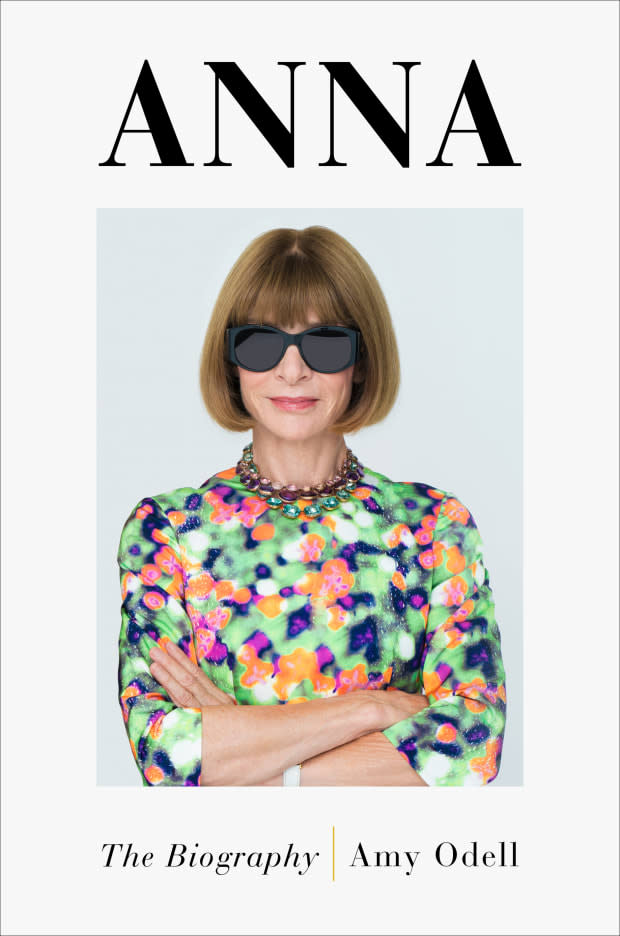
Photo: Courtesy of Simon & Schuster
How did this book come about for you?
I got the first call about writing this book from my agent in the summer of 2018. My publisher had had the idea to do a biography about Anna Wintour; I immediately got chills at the idea, and I think that's because Anna is someone who's in an unprecedented position of power. Her influence and power in the business world is really unmatched. Her longevity is tremendous. If you think about business leaders — Jeff Bezos, for instance, from the time he founded Amazon to the time he left as CEO, that was 27 years. Anna has been the editor-in-chief of Vogue for 34 years.
Despite all of that, despite being this public person for so long, she's still an enigma. And she's still an enigma even to people who have known her and worked closely with her for a long time. I felt like there was a real opportunity with this book to pull back the curtain on this woman who had been so public, but also so fascinating and so mysterious.
She very much feels larger than life, almost like a cipher — it's like she's not a real person. What I was most impressed with is how thoroughly you humanized her. It seems like you have a lot of empathy for her, but you're not excusing anything that she's done that's a mistake, and I feel like that's a hard line to walk. I'm curious how you were able to balance that in this book.
I want readers to be able to read this book and make up their mind about what they think about Anna Wintour. Obviously there's a lot, despite the fact that she's a cipher, as you say — and I think that's a great word for her. She has been very public. Most people know her from "The Devil Wears Prada," for instance. They know Meryl Streep's depiction of her in that film. However, in many ways, as I think you see in my book, she's really nothing like that character. I think that character is a pretty superficial version of Anna Wintour.
She may be known as this icy, inscrutable figure, but in the book, we get to see her adopting a puppy when her children are little, and the puppy tearing up her garden in her new townhouse. You see that she grapples with these failures at Vogue and at Condé Nast. You see that she has a warm relationship with her family and her friends. You see that she can be a gracious hostess in her home, be it in her Manhattan townhouse or in her estate out in Long island. Something that really surprised me actually is — and people who are very close to her said this to me — that she wants to be remembered not for being an editor-in-chief, but for her philanthropy.
I was able to tease these things out by interviewing more than 250 people. It was difficult, but the access became a little bit easier after Anna, through a spokesperson, agreed to set me up with some of her closest friends and colleagues to talk to.
I wanted to talk about that as well, the process of getting those interviews. You were given really unprecedented access to the people around her.
The access, I think, is what makes this book special, even though she didn't speak to me. But in the beginning, I thought I was going to have to give up on this book. I recall so many conversations with my husband and close friends about how it was so frustrating. I was just getting rejection after rejection for interviews, particularly in the beginning.
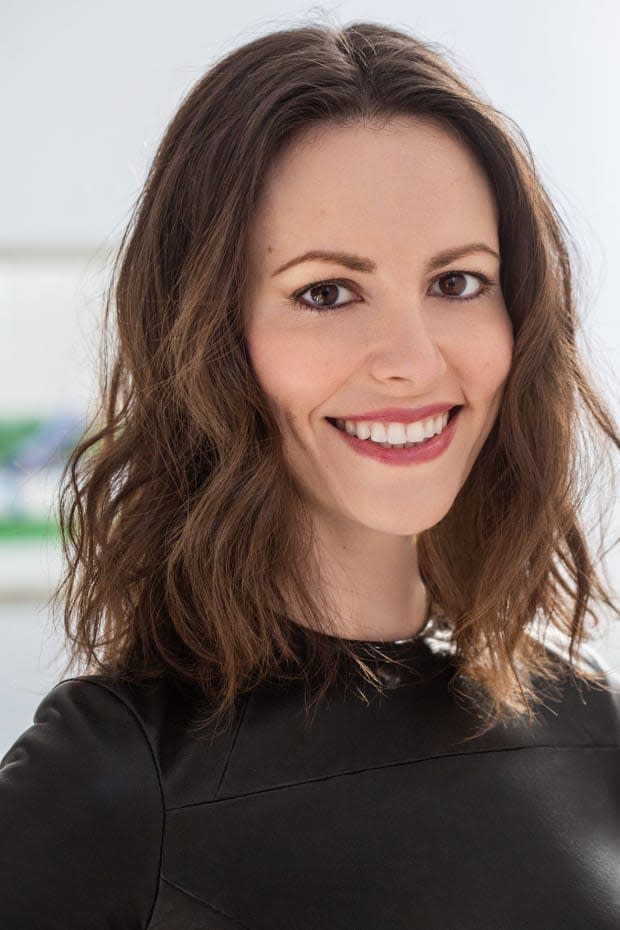
Photo: Arthur Elgort/Courtesy of Simon & Schuster
Around the time I was working on this book, I started researching other biographers and biographies, seeing how other people approach their books. One thing that Robert Caro had said — and this isn't totally unique to him, but he describes [making] a circle around the subject, then making smaller circles around them within that circle, and they're all people various degrees of separations from the person. You start from the outside and work your way in.
So, when I was getting frustrated and getting so many rejections, I was like, 'How can I start to get some yeses here?' So, I said, 'I'm going to start from the beginning of her life and work my way to forward,' thinking that people she worked with when she was 20, she would be less likely to be connected to today, or they would be less likely to be afraid of her today. That was really a helpful strategy.
By the time I communicated with Anna's representative, I had interviewed, I think, more than 100 people. At that point, if you're them and you're thinking, 'What do we do with this?' I could say, 'Well, I've interviewed more than 100 people.' It wasn't at a point, at that position, where it was going to be derailed. I'm a very determined person; even though I had thoughts like, 'Oh my God, I'm not going to be able to do this, this is the most difficult thing I've ever had to do,' it was going to happen. I was going to get it done.
You must have gotten some really good gossip about behind-the-scenes things that we don't know happened, and I would love to know how you determined what made the book and what didn't.
I had help from editors with that, to be honest. I had amazing editors at Gallery throughout the process. I didn't put anything in the book that I couldn't verify. There's nothing in the book that I feel remotely unsure of, which is what a journalist should do.
I was fascinated to learn about the level of control that she exerts on the Met Gala, but it wasn't always in the ways that I expected. For instance, we hear about how she approves every single person's outfit. That isn't really true: Not all of the celebrities get an Anna Wintour check mark on their outfit before they step onto that red carpet — about 80% of them do, but she also has people like Virginia Smith on her team who can help advise celebrities or help the staff figure out what they're going to wear.
The celebrities walk the red carpet, then they go inside and see the exhibit and have dinner. Anna puts a lot of thought into where every single person is sitting at the dinner. She just wants everything to run a certain way; the word that Stephanie Winston Wolkoff used was "militant." At the Camp gala, where Kim Kardashian wore the Thierry Mugler latex dress, she wasn't sitting, and Anna was like, 'Why isn't she sitting? Can you tell her to sit down?' One of her staff members had to tell her, 'Well, actually, she just can't sit down that dress.'
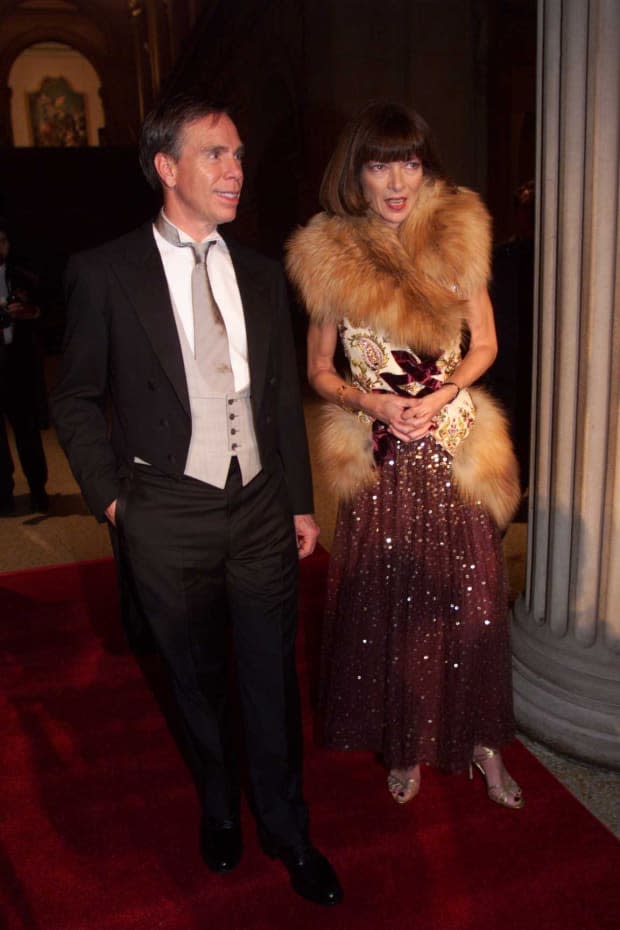
Photo: KMazur/WireImage/Getty Images
I'm sure that the Met could be its own book, frankly.
There was a lot, yeah. I did a lot of research on the Met and the evolution, because Anna has been planning it since 1995; part of my job was to figure out which ones are important and why.
But she's really particular about the food. I interviewed Winston Wolkoff, who planned the gala for about 10 years, and she said that Anna wouldn't allow chives, onions, garlic or parsley to be in the food because they smell. They make your breath bad, and they get stuck in your teeth. I was fascinated to learn that she was involved at that level of detail.
The standout there for me was that Anna loves chicken pot pie.
I say in the book that she likes chicken pot pie because it has everything in one dish — it's got the vegetable, the starch, the protein. Just about everybody said this: She's one of the most efficient people on the planet. And I think that that detail about her appreciation of chicken pot pie, specifically, for that reason, really speaks to that.
So much has changed about media since Anna first took over Vogue, which you speak about extensively in the book. How has she adapted to that?
Another extraordinary thing about Anna is that her lifestyle as this corporate titan hasn't really changed, even though legacy publishing fortunes have changed quite dramatically in the time that she's been in her role. She has, for more than three decades, had these unbelievable perks provided by Condé Nast. She started at Vogue in the summer of 1988, [and it wasn't until] the late '90s that she had to start thinking about digital media; for a long time, all she had to do really was focus on making one magazine a month, in addition to maybe events she was working on or whatever.
Now, she goes to work and she has to think about her website. She has to think about TikTok. She has to think about Instagram. And what people said to me is that she really cares about traffic. She wants to know, the day after the Met Gala, 'How did we do? How does the traffic look?' She will email people throughout the day and ask that question. She has really seen a lot, and she has had to do her best to adapt.
People who worked closely with her in the heyday of Condé Nast — when the company was thriving and when a lot of people could spend a lot of company money on things like traveling and going to fashion week in Paris and stuff like that — speculate that having to work the way she does today must be drudgery for her, because the budgets aren't what they once were for creating those shoots that they run still in the print magazine. But you know what? She's still there. She's a survivor. She's still doing it after all these years, and it's kind of amazing.
And I got the impression that she's not even contemplating retiring or stepping back in any way.
I have to say, there was no indication in any of my reporting that she's thinking about retiring or leaving anytime soon, and that has been confirmed in some articles that came out recently.
Also, something that's fascinating about her is she doesn't talk to her friends about work. When she was talking to the Obama administration about potential ambassadorship — which was never offered to her, as I explain — she didn't talk to anybody about that. I asked Anne McNally, who's quoted in the book at various points and who was a personal friend of Anna's for many years, 'What's she going to do when she's done?' And Anne said, 'She knows that when she's not in this job, her life is going to be different. And all she says is that maybe she'll get paid for all the advice that she gives instead of giving it away for free.'
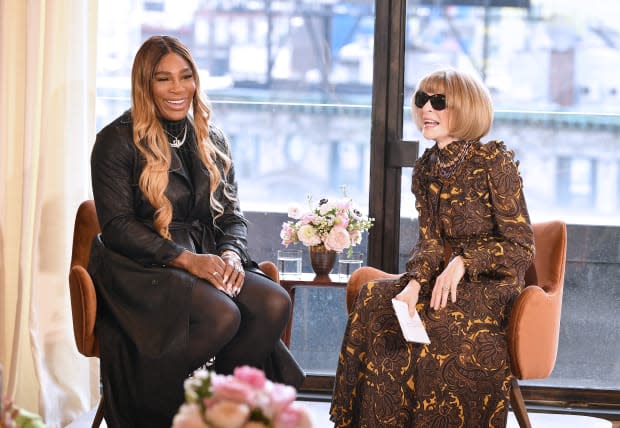
Photo: Dia Dipasupil/Getty Images
Did anything unexpected come up in these interviews that encouraged you to rethink an angle or preconceived notions about Anna?
I think that you have to. It's the biographer's responsibility to listen to what people say to you, to read what's out there and to put it all together in an accurate way. What surprised me the most is: Anna has faced [some difficult press] in recent years, and many people don't have anything else to reference her by recently. It's those recent articles that are about her, her approach to diversity and inclusion, how she was late with making a diversity pillar of what she and Vogue stood for.
However, in interviewing all these people — Serena Williams, Tom Ford, Tory Burch, even Grace Coddington — these are people who rely on Anna for advice. They seek her advice. Williams told me that she was struggling with tennis at one point and she called Anna; she couldn't remember exactly what Anna had said to her, but it enabled her to win Wimbledon. Mark Holgate, who still works with Anna at Vogue, told me that Hugh Jackman wanted to get Anna's advice on 'The Greatest Showman'; he summoned Anna and Mark and some other people on the Vogue staff to the Soho House and made a pitch for the movie and got their advice on it.
This is the stuff that's happening behind the scenes that people don't know about because Anna doesn't advertise it. But I think one of her strengths also as a leader is, she gets back to people. She gives the advice. It doesn't sit in her inbox and go on unreturned. And people really appreciate that about her.
I didn't get the sense that people in the industry, that powerful people who rely on her for advice and have long relied on her for advice, really see her as someone whose power is diminishing.
What's your take, as somebody who has both thoroughly researched Anna and who works in the industry in general, on what the future of Vogue might be without her?
If you look at the history of Vogue editor-in-chief transitions, you can see that Condé Nast does have a record of putting people in the Vogue editor-in-chief job who have already been working at Condé Nast. When Anna got the editor-in-chief job in the summer of 1988, she had been working at Condé Nast since 1983, when she started as creative director at American Vogue under Grace Mirabella; then she went to British Vogue as editor-in-chief, then House & Garden as editor-in-chief, then to Vogue.
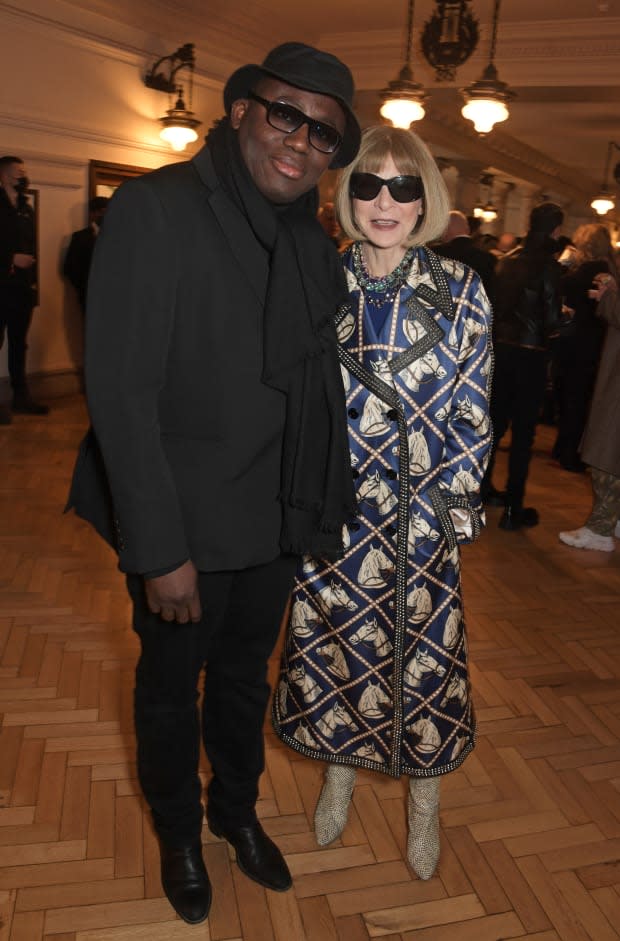
Photo: David M. Benett/Dave Benett/Getty Images
Diana Vreeland, who came before Grace Mirabella, had been working at Vogue before she became editor-in-chief; Grace Mirabella had been Diana Vreeland's right hand when she became editor-in-chief. This is the history, so it would make sense that they pick someone within the Condé Nast organization already. I know Edward Enninful's name gets bandied about a lot a potential successor to Anna, and he does beautiful, extraordinary work for British Vogue. He creates extraordinarily memorable fashion images that people love. People are really excited by his vision and what he's doing, so it makes sense that his name would be in the mix.
However, over the years, people have speculated that Anna was going to leave or be fired, and there were rumors about who would replace her — and Anna's still there. The rumors were wrong. There was a period where everyone was like, 'Oh, Carine Roitfeld is going to succeed Anna,' and that was totally wrong. Sources told me that there was only one time that she may have really been in danger, and that was in the '90s when she wasn't photographing enough advertisers' clothing, and it was becoming a concern to the business side.
Otherwise, my impression was that the leadership at Condé Nast really values her.
You said that she hopes her legacy will be her philanthropy; as somebody who has now written a book about her, what do you think her legacy is going to be?
I think that she's going to be remembered as much for her persona as anything that she has done; for the bob, the sunglasses, for that Meryl Streep 'Devil Wears Prada' character that so captivated the public.
But that icy reputation has been so sticky, and it really started in the mid '80s when she became the editor-in-chief of British Vogue and she cut staff and brought in new staff, she cut columns and longstanding columnists. One of the columnist she cut worked for her father at the Evening Standard, and she had no problem just cutting them because she believed that was the right thing to do for the magazine. But that got the press in London calling her 'Nuclear Wintour' and 'Wintour of Our Discontent,' and that really stuck.
I hope that my book will affect how she's remembered. One of the things I hope people think about when they read this book is how we perceive women in positions of power and how the press talks about them.
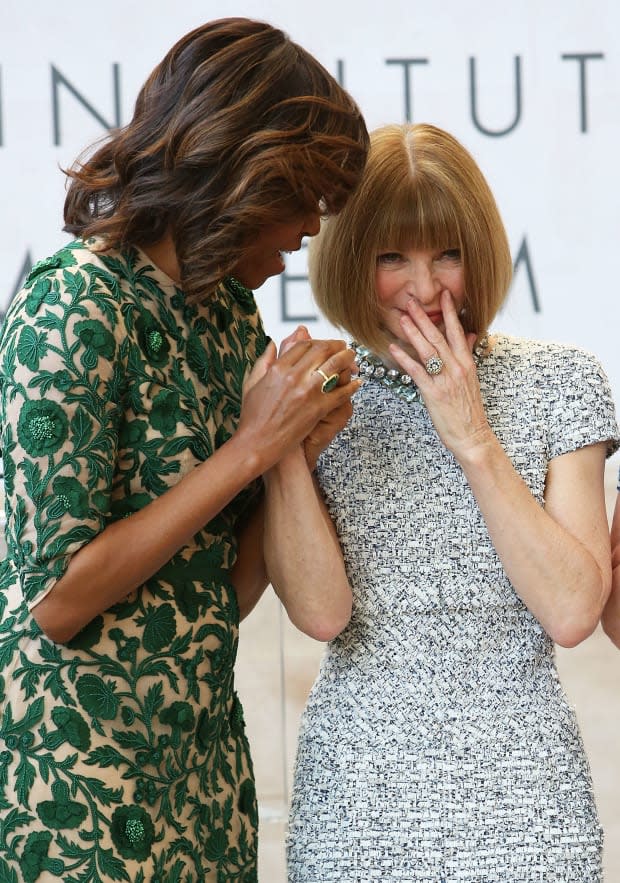
Photo: Monica Schipper/FilmMagic/Getty Images
You mentioned this in the book, but Anna has no plans to ever write a memoir herself. What pressure did you feel knowing that while working on this biography?
Enormous pressure. I'm a perfectionist by nature, so there was pressure that I put on myself, but I also knew that people who read a book about her were going to have big expectations and preconceived notions of her, and therefore I felt that it was important to be very thorough and objective.
What do you hope readers come away thinking or feeling after reading this book?
I hope that readers come away from this book with reflections. I hope people want to talk about it with their friends and their book clubs. I think there's so much to debate and talk about. I also feel like the context of Condé Nast is important in the image that people have of Anna and what her actions mean and what she means and what her power means.
[Anna's former boss] Alexander Liberman had an idea that people who worked at Condé Nast should be attractive and should look a certain way. He was the artistic director of the entire company for a long time — a very, very influential man — and he and Anna were described as having a close, very good working relationship. So, Anna had a habit of assessing people for their appearance, for their weight, as I discuss in the book. She would give them The Look, where she would start at your shoes and she would look her way up your outfit — but that was something that seemed to be not just happening under her at Vogue. It was an idea that was being promoted also by her boss. I think that this context is really important to consider.
Anna: The Biography is available for purchase now.
This interview has been edited and condensed for clarity.
Want the latest fashion industry news first? Sign up for our daily newsletter.
